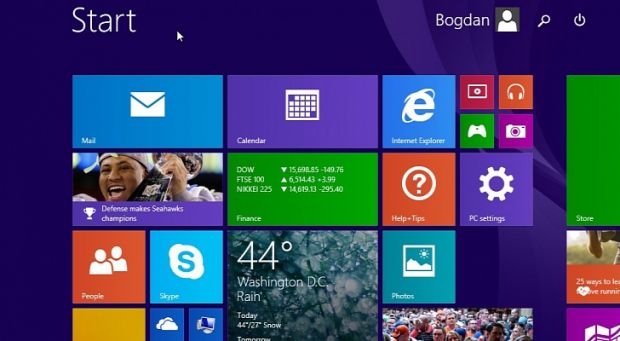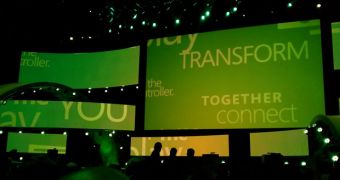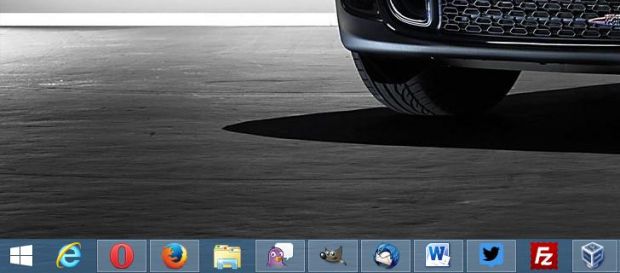Back in 2012 when Microsoft introduced the new Windows 8 modern operating system, Redmond expected not only to see the majority of users running older platforms to migrate to the new release, but also to lend a hand to the collapsing PC industry and restore the declining sales.
Not surprisingly, former CEO Steve Ballmer explained in an interview that “nobody buys Windows, they buy Windows PC,” admitting that Microsoft’s business was, is, and will most likely continue to rely on the way the PC industry performs, pretty much because Windows sales depend on how appealing today’s computers are for new buyers.
Saying that Windows 8 failed to impress has slowly become a cliché and everybody knows that although Microsoft invested billions of dollars to make it successful, only few users across the world have decided to give it a try.
The lack of a Start button, the new Metro UI, charms, the flat look, and all the other changes introduced in Windows 8 lowered the consumer appeal, so many users decided to stick to Windows 7, which was pretty much the best alternative that ever existed for this new operating system.
At first, Microsoft has slowly denied criticism, even though most complaints came for users who were clearly disappointed with some of the changes made to the operating system and which obviously affected the way they were working on their computers.
The Start screen is here to stay, Steve Ballmer said with several occasions, while other Microsoft executives said the same thing over and over again, pointing out that Windows 8 is nothing more than a greatly improved version of the successful Windows 7.
It turns out that the consumers have spoken and Microsoft had no other choice than to revert many of its decisions in order not only to bring back its disappointed users, but also to improve usability and reliability of its modern operating system.
While at first it ignored all complaints, the software giant acknowledged that it had no other option than to listen to customer feedback and it’s now getting ready to make even more changes to its operating system under a new CEO.
The Start button is an insult to users' intelligence.
It all started last year when after approximately one year of struggle, Microsoft decided to revert one of the main changes in Windows 8 and bring back the Start button in Windows 8.1. It turned to a small trick, however, and the new Start button isn’t launching a Start Menu, but only gets users to the Start screen.
Along with the Start button, Microsoft also implemented a boot-to-desktop option that allowed users to skip the Start screen and get directly to the desktop when starting their computers. This was actually one of the most requested features in Windows 8 and was already available in a number of third-party customization tools released for Windows 8 users.
Users, however, were hard to impress and the new Start button actually led to a new wave of criticism for Microsoft. “It’s an insult to our intelligence,” some said, explaining that Microsoft tries anything that’s possible to ignore users’ opinions to push forward its controversial Windows features.Windows 8.1 has been around for a few months, but the initial uptake is clearly below expectations, even though it’s pretty obvious that this new OS update comes with several improvements.
And still, Microsoft has finally acknowledged that the only way to fix its modern Windows is to listen to customer feedback and tweak the operating system in such a way that it could address their complaints.
Enter Windows 8.1 Update 1.
As its name implies, this is the first update for the recently-released Windows 8.1, with sources familiar with the matter saying that its debut is very likely to take place in April.
In just a few words, this is Microsoft’s very own way to say that it now cares about its users more than before, working on a new set of features that would greatly improve its platform.
The boot-to-desktop option that we’ve told you about is getting a major makeover, so it could now be turned on by default on non-touch devices. This pretty much makes sense, especially because many desktop users do not really like the Start screen and prefer to stick to the familiar desktop UI.
On the other hand, those using a touch unit, such as a tablet, will still get to see the Start screen and again, this makes sense because this is the touch-optimized UI that’s supposed to come in handy when you’re not relying on the standard mouse and keyboard combo.
What’s more, it’s being rumored that Microsoft is willing to give PC makers the power to decide whether they want boot-to-desktop turned on, depending on the devices they create. This means that Redmond is working to give both partners and users more choices.
The Metro UI would get several enhances and apps could run in their own windows, with several new controls for mouse users, including options to close the apps, tweak live tiles and even pin the apps to the taskbar expected to be included in the OS update.

Windows 9 to fix the broken modern OS.
And the company isn’t stopping here. Word is that Windows 9 is going to continue this major series of changes with the introduction of a Start Menu, one that would completely restore full functionality of the traditional Windows operating system.
Internally codenamed mini-Start, the new menu is expected to provide quick access to installed apps, just like the original feature available in Windows 7.
The Modern UI would get even more tweaks, in the form of apps running in their own windows right on the desktop. This means that Microsoft would resort to a Metro – desktop cocktail that would basically mix the two environments and make both more usable, especially for those still addicted to the traditional mouse and ignoring the touch trend.
As you can see, most of these improvements are aimed at making the modern Windows a much more user-friendly and reliable platform for desktop computers. This is clearly a good thing for millions of users out there, but at the same time, there’s no doubt that Microsoft needs to continue its efforts in the tablet industry as well. The touch side of Windows needs help too.
Surface has until now failed to compete with the big guys and the touch capabilities of Windows are clearly the key elements that need to be improved in the coming years.
Microsoft has apparently half of its Windows fixing plan ready to get the go-ahead and we’re pretty sure that the new CEO Satya Nadella, together with the help of Bill Gates, will manage to get the other half of the puzzle ready in time to save the world’s number one operating system from self-destruction.

 14 DAY TRIAL //
14 DAY TRIAL // 


